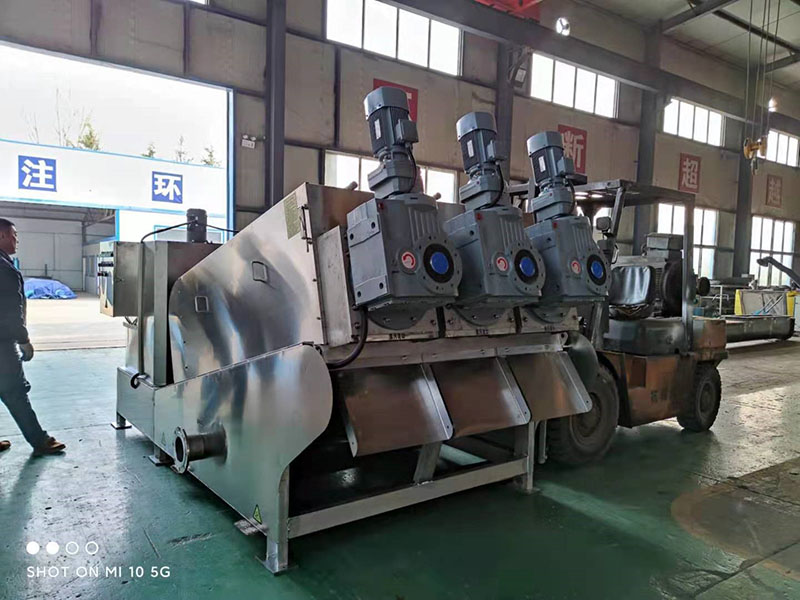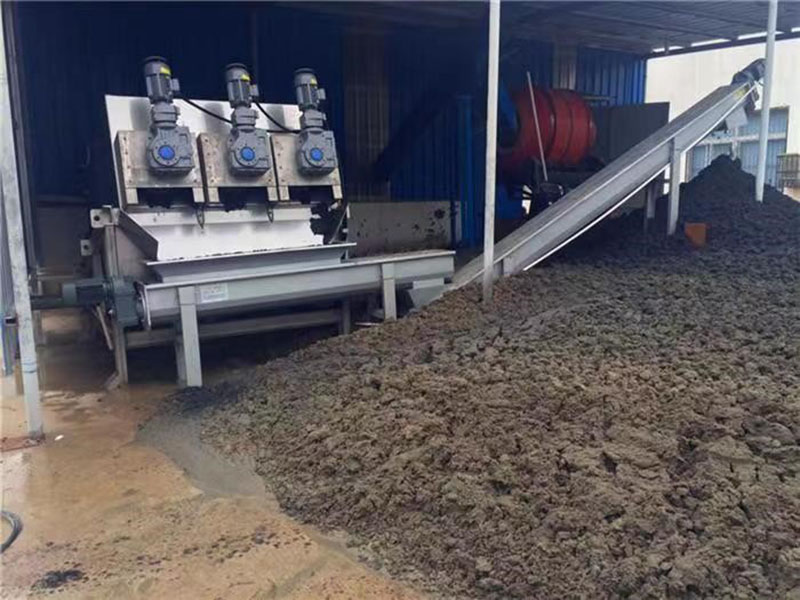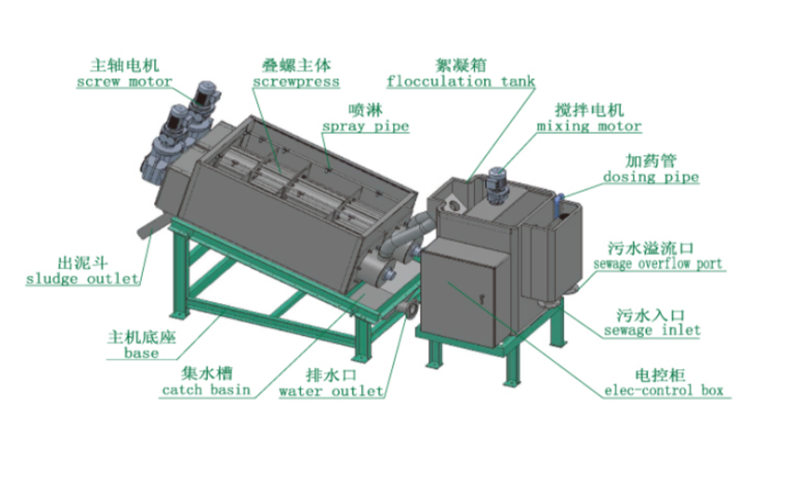Screw press sludge dewatering machine
Stacked screw type sludge dehydrators are widely used in municipal sewage treatment projects and water treatment systems in industries such as petrochemical, light industry, chemical fiber, papermaking, pharmaceutical, leather, etc. Generally, this equipment is widely used in the sludge treatment industry, which can reduce the construction of sedimentation tanks and sludge thickening tanks, in order to save the construction cost of sewage stations. The highlight of the spiral screen is that the internal structure of the equipment is relatively prominent. The front section is a concentration section, and the rear section is a dehydration section. The concentration, pressing, and dehydration of materials are completed in one cylinder. The unique and delicate filter body mode replaces the traditional filter cloth and centrifugal filtering method, which has become popular and sought after by customers.
Working principle of
1. Concentrated portion:
When the screw driving shaft rotates, the multiple solid active laminations located on the periphery of the driving shaft move relatively. Under the action of gravity, water is filtered out from the relatively moving lamination gap, achieving rapid concentration.
2. Dehydration section:
The thickened sludge continuously moves forward with the rotation of the screw shaft; Along the outlet direction of the mud cake, the pitch of the spiral shaft gradually decreases, the gap between the rings gradually decreases, and the volume of the spiral cavity continuously shrinks; Under the action of the back pressure plate at the outlet, the internal pressure gradually increases. Under the continuous operation of the screw driving shaft, the water in the sludge is squeezed out, and the solid content of the filter cake continuously increases, ultimately achieving continuous dehydration of the sludge.
3. Self cleaning part:
The rotation of the screw shaft drives the traveling ring to rotate continuously. The equipment relies on the movement between the fixed ring and the traveling ring to achieve a continuous self-cleaning process, which ingeniously avoids the blocking problem commonly encountered in traditional dehydrators.


